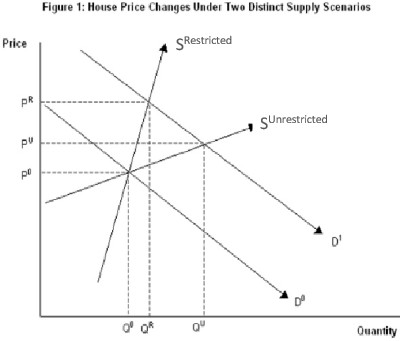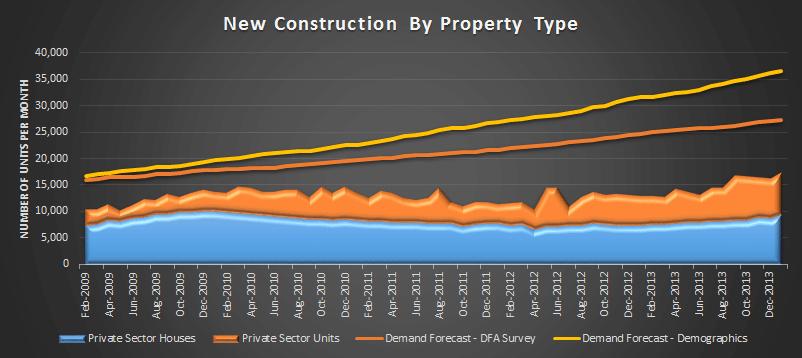
By Martin North, cross-posted from the Digital Finance Analytics Blog
Although new construction is up this month, DFA believes that demand for new property far outstrips supply because of planning constraints, high development costs and fees; and the inability of many construction companies to get the funding and labour they need at reasonable prices.
But, how big is the gap between what we are currently building and what we need to build to address the demand supply problems? Its not easy to assess, because as we highlighted previously, people make logical decisions. They live with parents longer, might buy an existing investment property because they cannot buy in their preferred area, or simply delay transacting. This distorts demand in a feedback loop. We also have an existing housing stock which is being changed by renovation and conversion.
In addition, demand is fueled by overseas demand, migration, and demographic changes such as older people looking to downsize, and young families looking to buy larger houses. Its a complex picture.
But undaunted, DFA made two separate calculations. First, we modelled all the available demographic data, including population growth, aging profiles, demographic shifts, household sizes, and overseas buyers, and made an estimate of the number of building approvals needed to meet this demand.
Then we took data from the DFA households surveys, as mentioned previously, in which we estimate that over the next three years we will need more than 900,000 new properties to meet demand, when over the last 12 months we achieved 183,000 units.
We retro-fitted our findings on the period from 2009. Here is the top line result of the analysis, showing the gap between what was approved, and what would need to be approved to fill the gap. We have long term under-supply.
 The yellow line, driven by pure demographics, indicates we need to more than double current construction rates to meet demand. The DFA survey results are a little lower, but on either measure, we are not building enough new property. As a result, demand and supply is in disequilibrium and so prices are, in some states running away.
The yellow line, driven by pure demographics, indicates we need to more than double current construction rates to meet demand. The DFA survey results are a little lower, but on either measure, we are not building enough new property. As a result, demand and supply is in disequilibrium and so prices are, in some states running away.
This is why, as all the data shows, first time buyers are being squeezed out. This will only get addressed with some significant policy changes across States and Federal government. I wonder if the current Senate inquiry on Affordable Housing will make a difference?

